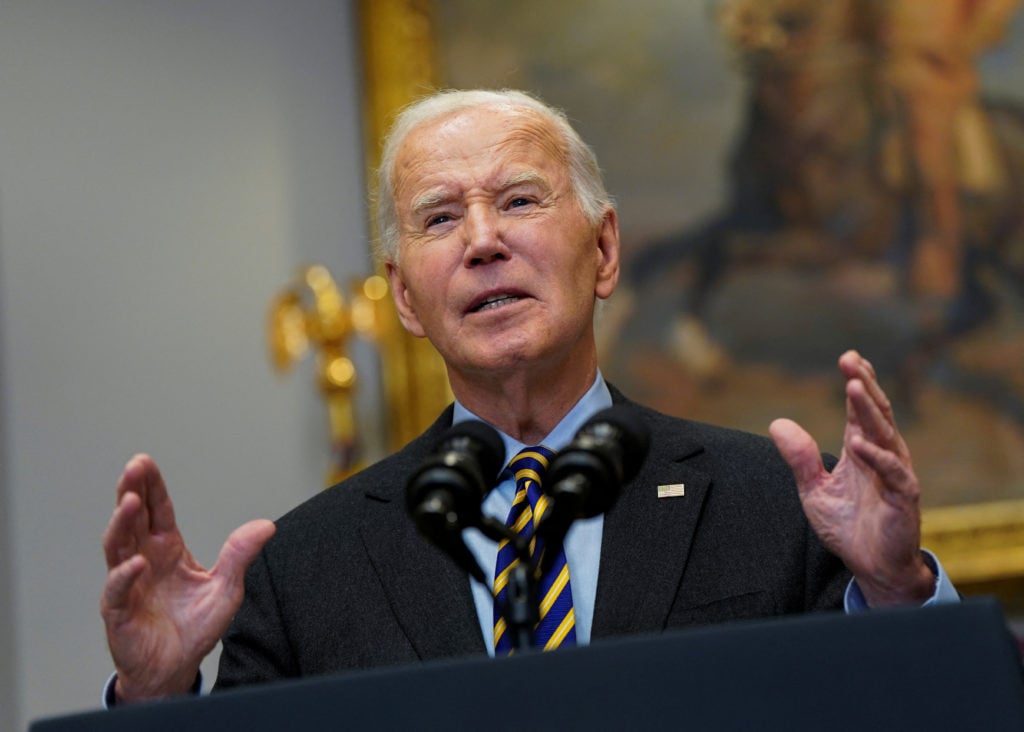Summary
President Joe Biden highlighted his administration’s economic record, citing consistent job growth and a 2.7% inflation rate drop from its 2022 peak.
December’s jobs report showed 256,000 new jobs and declining unemployment, signaling steady economic growth.
However, inflation remains above the Federal Reserve’s 2% target, and interest rates remain high, impacting homebuyers and businesses.
Public pessimism lingers on affordability as Biden passes a largely strong economy to his successor, Donald Trump.



I dont see how we can’t actually quantify economic wellbeing, but I dont know of a unit for this.
Like we need something that takes into account wealth disparity. If your GDP goes up 5,000% and all that wealth goes into the pocket of a few people, the unit that measures economic welfare should be very low.
There are a number of general-welfare measures. Median inflation-adjusted income is a good one, then you can break that into deciles if you want more detail. The GINI coefficient gives a measure of income and/or wealth inequality within a society. Or if you want more effects-based metrics, there are all kinds of quality-of-life and satisfaction indices, with different relative weights for different contributing factors.
The economy should only be judged by the bottom 1% not the top.
That’s an interesting idea, but bottom 1% of what?
GDP usually looks at companies exports, not individuals. So you’re saying we should only calculate the GDP from the poorest 1% of companies? That seems like it would be wildly off.
I bet there are way smarter people should figure out how such an economy would work. (Humans have had a top down approach economically since forever.) but it’s obvious our relationship with top down approaches has changed. We need to come together and save humanity, because at this rate it’s obvious our ways of thinking are destroying ourselves and the world.
Record Homelessness…
You mean future prison laborers? Go America!
You can adjust GDP by Gini coefficient which measures income inequality. Eg. https://en.m.wikipedia.org/wiki/List_of_countries_by_inequality-adjusted_income
I looked at the article, but I have no idea what “0.689” means.
What’s the unit abbreviation?
What does a high number mean? What does a low number mean?
Im not sure about the calculations for that specific value but the Gini coefficient itself is an index between 0 and 1 where 0 is no inequality and 1 is maximum inequality.
The index in the link I provided is also between 0 and 1 where the value for one country is only comparable to that of other countries. The higher the number the better but again not sure what the exact components are as it was just an example of quanitifying inequality.
Yeah, thats not an alternative to GDP then.
Like, if everyone in the country earns $1 per day and the cost of living is $2 per day, the gini is good but the economy is still shit
We need some unit that actually measures if an economy is doing well
GINI, GDP and PPP combined can get you at least a rough estimate.
Yeah. But we need one number to throw on a chart, make a ranking of all countries, and get the news and history books to say (instead of GDP)
What happened to the Misery Index?
https://en.wikipedia.org/wiki/Misery_index_(economics)
I imagine this measurement is probably adjusted for PPP (purchase power parity). Going from comparing the GDP per capita to a PPP and Gini adjusted GDP per capita (like what that index likely does) should be what you’re getting at. Otherwise, there’s HDI (human development index) also mentioned in the wiki that goes beyond monetary value.
Is that a quantitative value for measuring the whole.economy’s success, or does it only measure income inequality?
Average savings rate, average credit card debt, number of homeowners, college enrollment rates, average net worth. Lots of measures that the news and politicians ignore.
Some of the measures you cite are irrelevant to quality of life. For example, there’s only a weak correlation between rates of home ownership and overall quality-of-life metrics. For example, Switzerland scores high on quality of life measures but has quite a low home-ownership rate. The converse also applies. And savings rate can be driven by fear of post-requirement income insecurity, and average credit card debt matters less than the cost of borrowing (if your card providers only charge 2% a year, that’s a different picture than if they charge 25%).
Though your general observation still holds: the media (and politicians) focus on a small number of metrics that aren’t relevant to most people’s lives. You just have to be selective about what additional metrics you want to add to the mix.
Averages wouldn’t work. We need some unit that returns a low number if most of the wealth is in a small number of people’s pockets.
Consider a world where one country has 99% of the world’s wealth, and 99% of that wealth inside that country is held by 1 person, with everyone else literally struggling to feed themselves.
An average net worth for the country would show the country as having a very good economy. But, in fact, the economy is terrible. Because it benefits only one person. That’s a failed economy.
That number would be the median, which is a form of average.